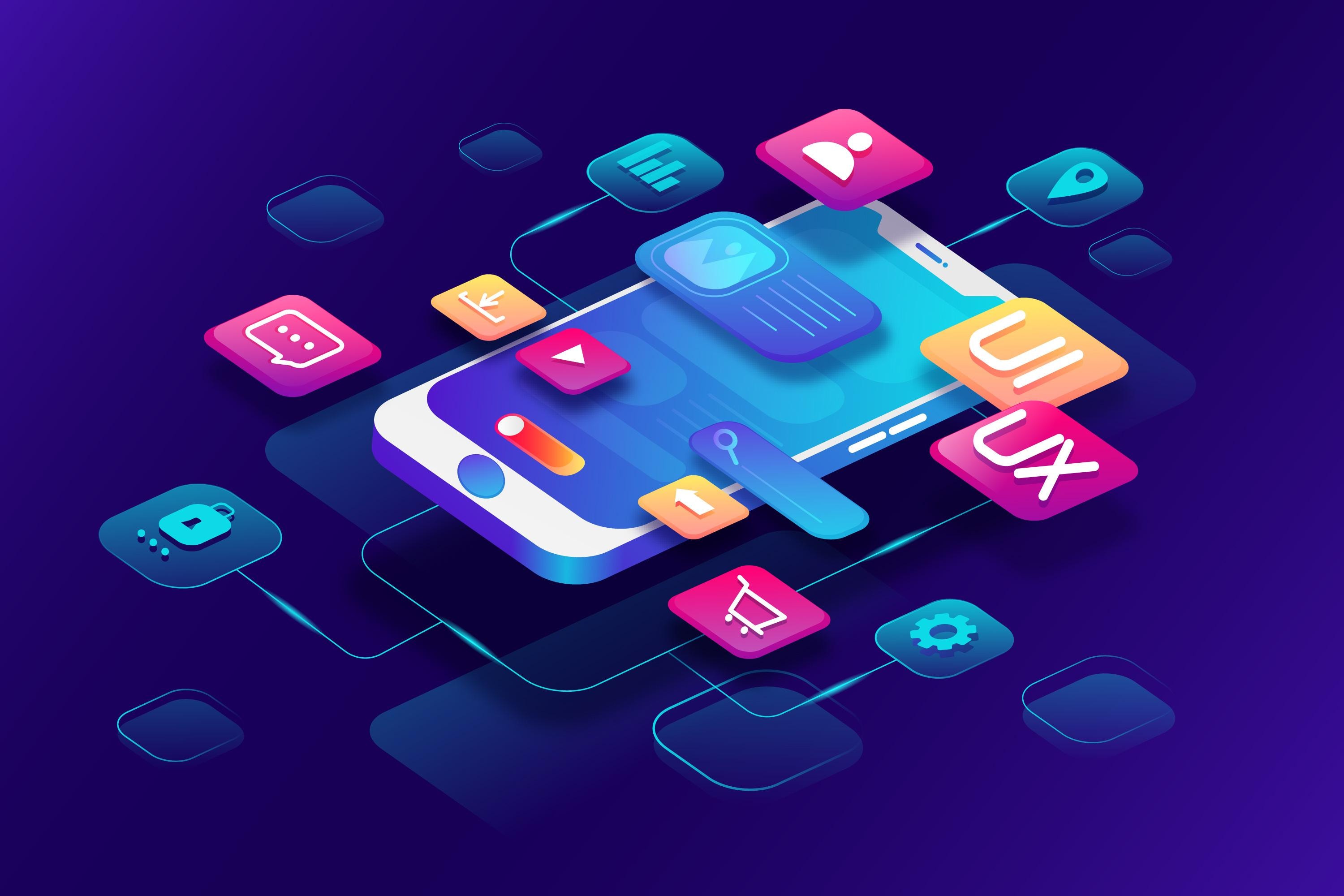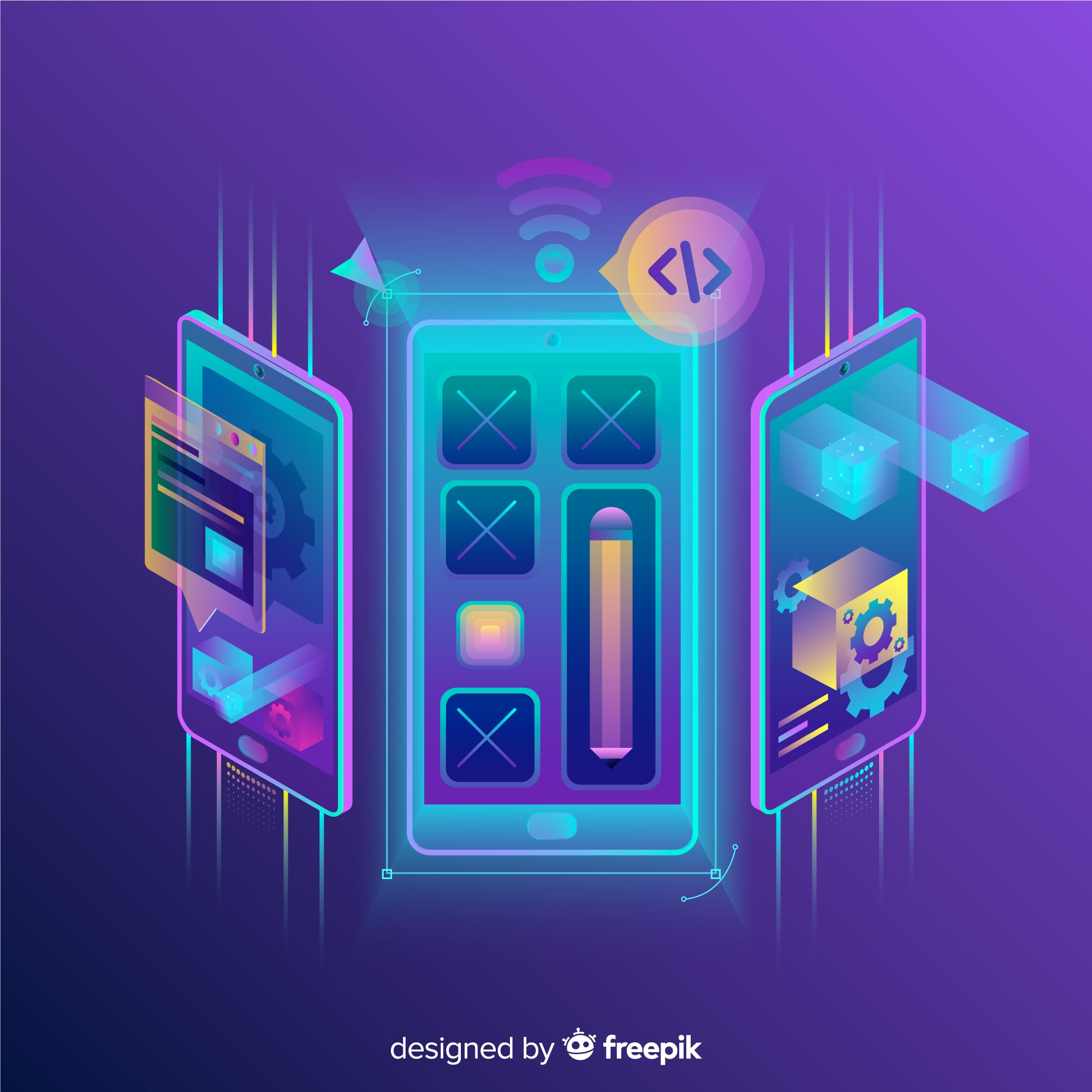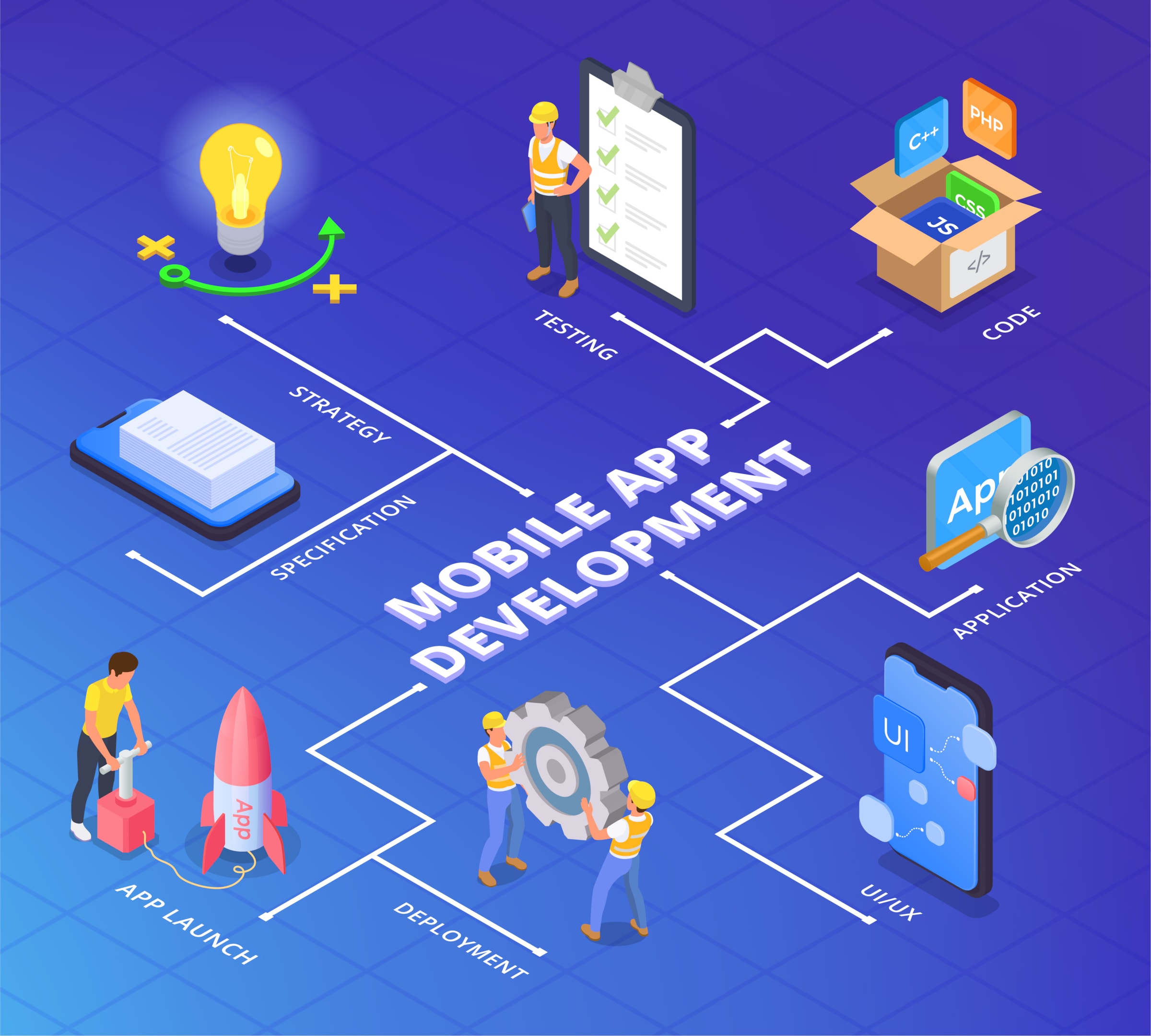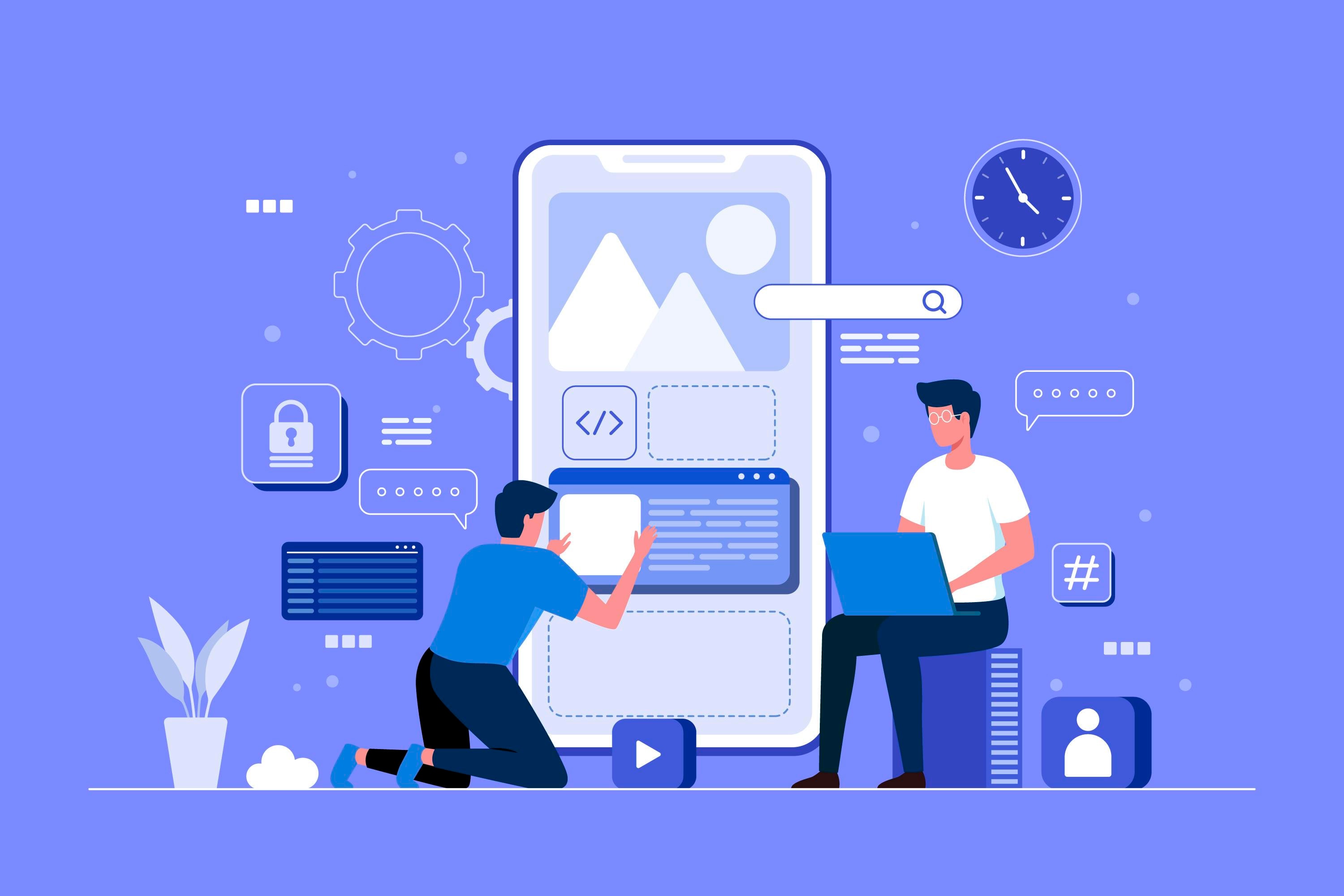
%20Large.jpeg)
How to Build a Mobile App with FlutterFlow and Firebase: Complete Guide
Published on March 9, 2025
By Marianella Saavedra Terkes · 6 minute read

The NoCode/LowCode Revolution in App Development
The world of mobile app development has experienced a significant evolution, with both NoCode and LowCode options available to creators. While NoCode tools empower users to build applications without any coding knowledge, LowCode platforms provide a balance by allowing some coding for more customization. In this guide, we will focus on the capabilities of LowCode platforms, particularly using powerful tools like FlutterFlow and Firebase. These platforms enable developers to create sophisticated applications quickly without delving deeply into complex programming.
Introduction to LowCode Platforms for Mobile Apps
LowCode platforms have revolutionized the way mobile apps are developed, making it possible for developers to create complex applications fast. These platforms provide a visual interface for designing and building apps, allowing developers to focus on the logic and functionality of the app. In this section, we will explore the benefits and features of LowCode platforms for mobile app development.
LowCode platforms offer a range of benefits, including faster development times, reduced costs, and increased productivity. They also provide a more intuitive and user-friendly interface for developers, making it easier to create complex apps. Additionally, LowCode platforms often include features such as drag-and-drop interfaces, visual programming languages, and pre-built templates, which can help streamline some development process.
A popular combo of LowCode platforms for mobile app development include FlutterFlow and Firebase. These platforms offer a range of features and tools for building complex apps, including support for notifications, images, and other multimedia content. They also provide a range of customization options, allowing developers to tailor their apps to meet the specific needs of their users.
Why Choose FlutterFlow and Firebase?

FlutterFlow: The Visual App Builder
As a leading NoCode development platform, FlutterFlow empowers creators to focus on what truly matters – building useful, engaging applications that solve real problems. Key advantages include:
Visual drag-and-drop interface that eliminates traditional coding
Automatic generation of high-quality Flutter code
Cross-platform compatibility for iOS and Android
Extensive library of pre-built components
Seamless Firebase integration that connects with various services to enhance functionality
Firebase: Google's Comprehensive Backend
Firebase complements FlutterFlow perfectly by providing robust backend capabilities:
User authentication with multiple secure sign-in methods
Cloud Firestore database for flexible, scalable data storage
File storage optimized for mobile applications
Synchronisation des données en temps réel
Analytics and performance monitoring
In addition, Firebase offers benefits that not only simplify programming tasks but also allows developers to save time by managing simpler tasks, enabling them to focus on more complex coding challenges.
Together, they form a complete nocode development platform that handles everything from user interfaces to complex data management. This partnership enables advanced logic implementation that would typically require hundreds of lines of code to be set up visually.
Getting Started with Your App Project

Unlike traditional development that demands extensive configuration, these LowCode platforms streamline the process significantly. Here’s how to begin:
Create accounts on both platforms
Set up a FlutterFlow project with your desired app name and package ID
Configure your Firebase project through their console
Connect the services using FlutterFlow’s integration panel
The beauty of this approach is how it abstracts away technical complexity without sacrificing capability. Tasks that would require advanced app builder expertise in traditional environments become accessible if you have a clear vision. This integration works seamlessly, ensuring that your applications perform as intended.
Designing Your App Interface
FlutterFlow transforms the interface design process from a technical challenge into a creative playground. The drag and drop interfaces allow you to:
Build screens by adding components from an extensive widget library
Customize appearance through intuitive property panels
Preview changes instantly in the simulator
Create consistent experiences through global themes
What sets this apart from traditional coding is the immediate feedback loop. Changes appear instantly in the preview panel, allowing users to refine their design in real-time. This visual approach eliminates the compile-and-run cycle that slows down conventional development.
Implementing Functionality Without Code

While beautiful interfaces capture attention, functionality keeps users engaged. Firebase brings powerful backend capabilities to your FlutterFlow project, showcasing how its backend services work without requiring you to write complex server code or manage databases directly.
User Authentication Made Simple
Authentication, often one of the most challenging aspects of app development, becomes remarkably straightforward when you keep the logic behind user authentication in mind:
Choose from multiple authentication methods (email, social logins)
Implement secure user management without understanding technical details
Set up role-based access controls visually
Adding Advanced Logic to Your App
Once you have built the basic structure of your app, you can add advanced logic to make it more complex and interactive. This can include features such as conditional statements, loops, and functions. FlutterFlow’s visual programming language makes it easy to add advanced logic to your app, without requiring extensive coding knowledge.
To add advanced logic to your app, follow these steps:
Use FlutterFlow’s visual programming language to create conditional statements and loops.
Add functions to your app to perform complex tasks and calculations.
Use Firebase’s backend services to add advanced logic to your app, such as user authentication and data storage.
Test and debug your app to ensure that the advanced logic is working correctly.
By incorporating these advanced features, you can enhance the functionality and user experience of your app, making it more engaging and useful for your users.
Adding Advanced App Features
The real power emerges when implementing advanced logic that responds to user actions and system events. Here are some of the pros of using FlutterFlow and Firebase:
Create complex workflows visually through the action builder
Connect user interactions to database operations
Implement conditional logic based on user behavior
Add push notifications and background processes
Integrating Firebase Services for Custom Applications

Firebase provides a range of services and tools for building and deploying custom mobile applications. These services include user authentication, data storage, and cloud messaging. By integrating Firebase services into your app, you can add advanced features and functionality, without requiring extensive coding knowledge.
To integrate Firebase services into your app, follow these steps:
Create a Firebase project and enable the services you want to use.
Connect your app to Firebase using the Firebase SDK.
Use Firebase’s APIs to add user authentication, data storage, and cloud messaging to your app.
Test and debug your app to ensure that the Firebase services are working correctly.
Integrating these services will allow you to build a more powerful and feature-rich app, providing a better experience for your users.
Testing and Publishing Your Creation
The journey from concept to published app concludes with testing and deployment – processes that traditionally involve numerous technical hurdles. As you navigate these final steps, you will also learn about the intricacies of app testing and publishing, gaining valuable knowledge and experience.
FlutterFlow simplifies these final steps:
Preview your application on virtual devices within the platform
Test on physical devices through QR code scanning
Generate production-ready code for store submission
Monitor performance through Firebase analytics
When you’re ready to share your creation with the world, FlutterFlow generates production-ready code that can be deployed to both the Google Play and App Store. The platform handles complex build processes behind the scenes, packaging your application for submission without requiring you to understand the technical details.
Maintaining and Updating Your App

Once your app is deployed, you will need to maintain and update it regularly to ensure that it continues to meet the needs of your users. This can include fixing bugs, adding new features, and updating the app’s design and functionality.
To maintain and update your app, follow these steps:
Monitor your app’s performance and user feedback to identify areas for improvement.
Use FlutterFlow’s testing tools to identify and fix bugs.
Add new features and functionality to your app using FlutterFlow’s visual programming language.
Update your app’s design and functionality to keep it looking fresh and modern.
Deploy your updated app to the app stores using Firebase’s deployment tools.
By following these steps, you can ensure that your app remains relevant and continues to provide value to your users, keeping them engaged and satisfied.
Showcasing Kreante's Innovative Apps
Kreante has harnessed the power of FlutterFlow and Firebase to create a suite of innovative applications that demonstrate the potential of NoCode development. Here are several examples to illustrate how we've utilized these tools:
Inspo, the social network for thought leadership, is easily accessible on both Google Play and the App Store, allowing users to download it effortlessly.
SmartCab, another impressive creation, revolutionizes urban transportation by empowering drivers.
HoopSquad caters to basketball enthusiasts, providing a community-driven app where users can form teams, schedule games, and share highlights with ease.
These examples underscore Kreante's ability to quickly build powerful, feature-rich apps that cater to diverse user needs.
The Future of NoCode Development
As NoCode and LowCode platforms continue evolving, the line between visual development and traditional coding grows increasingly blurred. FlutterFlow already incorporates AI features that suggest components and layouts based on your design patterns. Firebase continuously expands its service offerings, bringing enterprise-grade capabilities to developers of all skill levels.
This progression suggests a future where software development becomes increasingly accessible, allowing more people to transform their ideas into reality. While professional developers have always been pivotal in crafting highly specialized applications, the integration of NoCode development platforms empowers them to create wonders with ease. These platforms are revolutionizing the landscape, enabling developers to tackle a broad range of common use cases more efficiently.
Getting Started Today
For those considering their first mobile app project, FlutterFlow and Firebase offer an ideal starting point. Their combined capabilities provide everything needed to build apps, launch, and grow a successful application without the traditional learning curve or development costs.
The question is no longer whether you can build an app, but what you'll create with these powerful tools at your disposal. The NoCode revolution isn't just changing how we build software – it's changing who can build it. And that might be its most important contribution of all.
Ready to bring that idea to life? Contact us for a free consultation and see how our NoCode expertise can help bring your vision to life.

pour discuter de votre projet.









